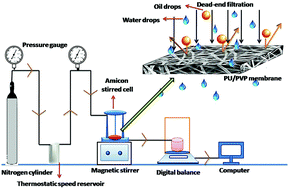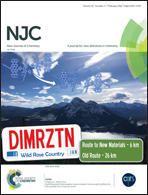Tailored design of polyurethane based fouling-tolerant nanofibrous membrane for water treatment†
Abstract
Polyurethane (PU) nanofibers have gained attention due to their good mechanical properties and water resistance. However, the applicability in water filtration is limited due to their hydrophobic nature. A new class of high performance fouling tolerant hydrophilic PU based nanofibrous membranes have been fabricated by an electrospinning technique. The electrospun parameters of the PU systems were thoroughly optimized for ideal fiber diameter and fiber morphology suitable for water filtration. The effects of polyvinylpyrrolidone (PVP) concentration in membrane morphology, as well as physical and chemical properties of the developed membranes, were studied. PU/PVP exhibited improved hydrophilicity, which was confirmed from the contact angle and protein adsorption results. Under low pressure, all PVP modified membranes showed a water flux higher than that of 1000 lm−2 h−1. Furthermore, the PU/PVP membranes exhibited good rejection performance, higher than 80% for olive oil and 99% for gingelly oil. The results showed that the incorporation of PVP into the PU membrane caused a significant improvement in the antifouling property and membrane performance. Antifouling properties of the developed membrane were investigated using the Hermia model and the fouling mechanism is fitted with a cake filtration model. All these results showed that electrospun PU/PVP nanofibrous membrane could be a promising candidate for cost effective water treatment.



 Please wait while we load your content...
Please wait while we load your content...